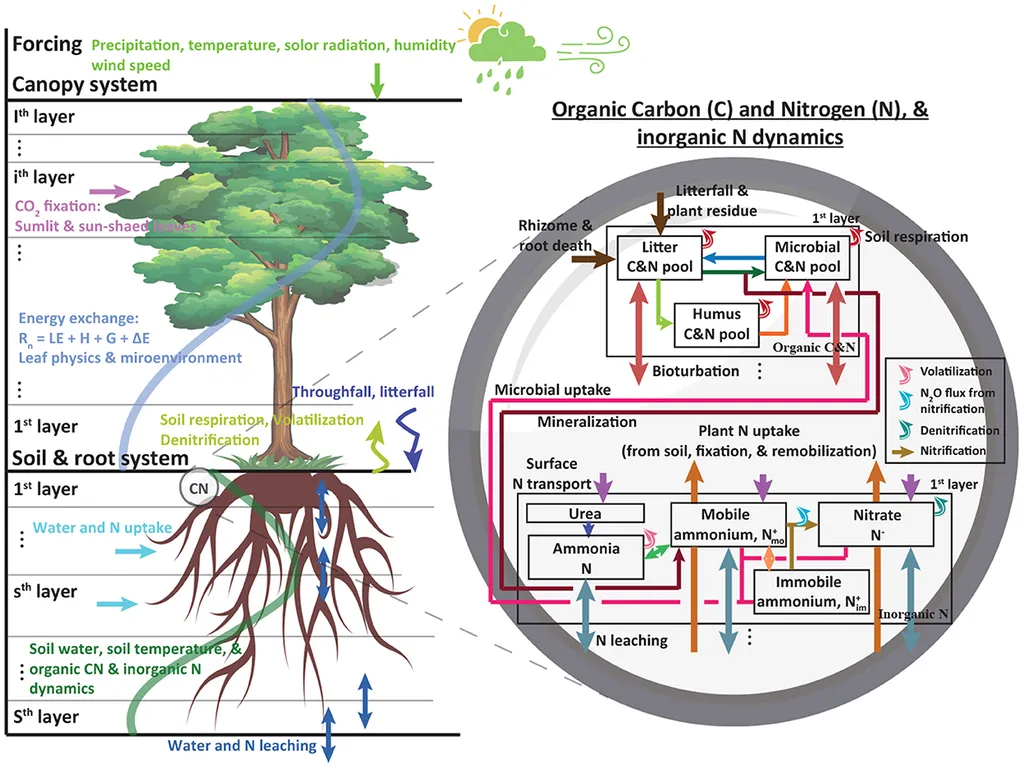In the heart of Korea’s temperate grasslands, a groundbreaking study led by Hyunjin Kim from the Department of Agricultural Biotechnology at Seoul National University is challenging long-held assumptions about soil respiration and its implications for global carbon cycles. Published in the journal *Scientific Reports* (translated as “Scientific Reports”), this research could reshape our understanding of soil carbon dynamics and have significant implications for the energy sector.
Soil respiration (RS) is a critical process in terrestrial ecosystems, releasing vast amounts of carbon dioxide (CO2) into the atmosphere. It is the second-largest carbon flux in these ecosystems, playing a pivotal role in regulating Earth’s climate. However, predicting future RS has been fraught with challenges due to methodological errors in partitioning RS and uncertainties in its seasonal responses.
Kim’s study sought to test the assumption that microbial respiration is similar between planted and root-free soils, a cornerstone of many RS partitioning methods. The findings were striking. “Microbial respiration in soils from planted plots was 3.88 times higher than that from root-free plots during lab incubation,” Kim revealed. This discrepancy highlights a significant flaw in current partitioning methods, which could lead to inaccurate predictions of future RS.
The study also explored the two main components of RS: autotrophic respiration (RA), which is driven by plant roots, and heterotrophic respiration (RH), which is driven by soil microorganisms. The researchers found that the RH:RS ratio was relatively low during the non-monsoon season but increased significantly during the monsoon season. This suggests that RH is more sensitive to temperature and soil water content than RA, a finding that could have profound implications for predicting RS under changing climate conditions.
“RH was more sensitive to temperature than RS, indicating a greater Q10 of RH than that of estimated RA,” Kim explained. The Q10 value is a measure of the rate of change in respiration with temperature. A higher Q10 for RH means that this component of RS will increase more rapidly with rising temperatures, a critical factor to consider in the context of global warming.
The study’s findings also have commercial implications for the energy sector. Accurate predictions of RS are crucial for developing strategies to mitigate climate change, such as carbon sequestration and bioenergy production. By improving our understanding of soil carbon dynamics, this research could help energy companies develop more sustainable and efficient practices.
Moreover, the study found that the annual RH:RS ratio, excluding the monsoon period, was comparable to those reported in the global Soil Respiration Database (SRDB) and other Korean literature. This suggests that annual RH:RS may be similar across the globe when extreme precipitation events, such as monsoons, are excluded.
Kim’s research underscores the need for more accurate methods of partitioning RS and highlights the importance of considering seasonal variations in temperature and soil water content. As the world grapples with the challenges of climate change, this study provides valuable insights into the complex dynamics of soil carbon, paving the way for more effective strategies to mitigate the impacts of global warming.
In the words of Kim, “This study highlights that the assumption of RS partitioning can be violated, that RH exhibits a greater sensitivity to changes in temperature and soil water content than RA, and that annual RH:RS may be similar across the globe when extreme precipitation (e.g., monsoon) is excluded.” These findings not only advance our scientific understanding but also offer practical solutions for the energy sector, making this research a significant step forward in the fight against climate change.

